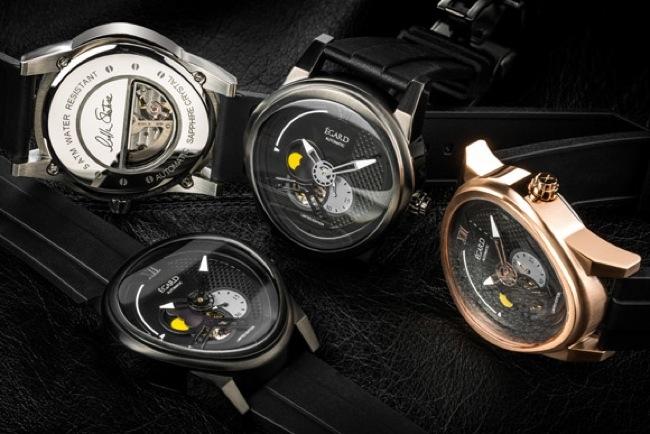
William Shatner is a man of many talents: actor, singer, narrator, spokesman, comedian, etc., but he’s best known for his role as James T. Kirk of Star Trek, and to a lesser (or bigger, depending on who you ask) extent, T.J. Hooker, host of Rescue 911, and that guy from Priceline.com. Now, he can add watchmaker to his resume.
Kirk – uh, excuse us, Shatner – recently partnered with the Egard Watch Company to develop a limited-edition timepiece called Passages. Called a “mechanical work of art,” Passages doesn’t need a battery for power, and instead uses your wrist movements to automatically wind it up – a technology adapted from Miyota, a company owned by Citizen.
The whole thing started with a chance encounter between Shatner and Casper Van Dien, Egard’s brand ambassador. Shatner fell in love with Van Dien’s watch and became a fan, eventually leading up to a collaboration with Egard founder Ilan Srulovicz. Shatner worked directly with Srulovicz to design four versions of the watch – Rose, Steel, Gunmetal, and Black, with either a leather or steel band. The name Passages stems from “Shatner’s idea that represents the valued moments in time, for himself his family and generations to come,” Egard said.
Fitting of a watch designed by a starship captain, Passages “is dusted with 100 percent authentic asteroid dust,” Egard said (although we don’t know how one procures asteroid dust, perhaps it’s more common that we think). The watch has a unique shape that’s made of high-grade stainless steel designed for watchmaking, and the special-cut domed sapphire front is “virtually scratch proof.” The back is signed by Shatner, naturally.
“In our process to come up with the infinite scale of time, we came up with the idea to put authentic asteroid dust on the dial,” Shatner said “Each limited edition passages watch comes with dusted asteroid (some of the most primitive material in the universe) on the dial so you can walk around with a piece of the universe on your wrist.”
Rather than selling it at traditional watch shops and jewelers, Egard – which was founded recently in 2012, and uses movements from Switzerland and Japan – has gone the crowdfunding route via Indiegogo. Besides crowdfunding being the future of commerce, Egard says this allows them to sell a watch for less than $400 by cutting out the middlemen and marketing expenses, which would normally go for $1,199 if it went retail. It also allows Egard to make the watch that much more unique. Each watch costs $399 (additional straps are extra, and there’s a “layaway” plan), but there’s also a $550 edition that gets you a fancy box, both leather and steel straps, and a USB drive containing behind-the-scenes footage from the watch development. The campaign ends on December 27, but it has more than tripled the $75,000 goal, with an estimated delivery date of March 2014 – out of time for Christmas for the old-school Star Trek fan in your household, unfortunately (although it isn’t official Star Trek merchandise, mind you).
Any Egard-owning DT readers out there? Let us know in the comments below about the watch quality.


